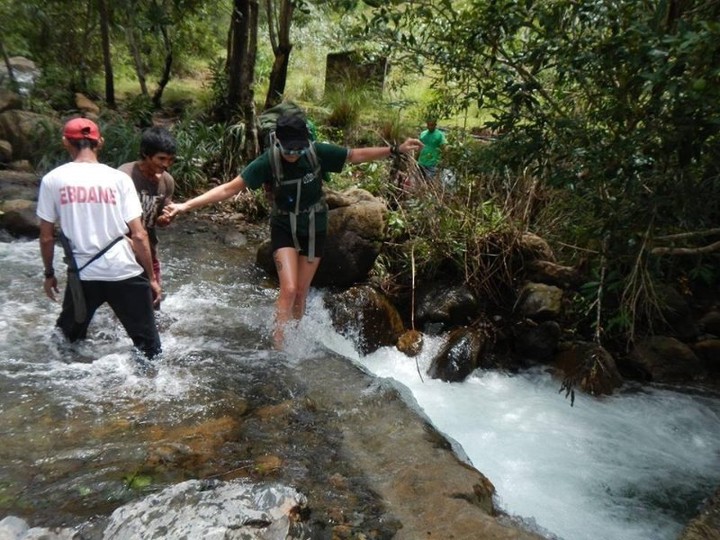Biofilm Formation and Potential for Iron Cycling in Serpentinization-Influenced Groundwater of the Zambales and Coast Range Ophiolites
 Hiking around the Zambales Ophiolite, Philippines
Hiking around the Zambales Ophiolite, Philippines
Abstract
Terrestrial serpentinizing systems harbor microbial subsurface life. Passive or active microbially mediated iron transformations at alkaline conditions in deep biosphere serpentinizing ecosystems are understudied. We explore these processes in the Zambales (Philippines) and Coast Range (CA, USA) ophiolites, and associated surface ecosystems by probing the relevance of samples acquired at the surface to in situ, subsurface ecosystems, and the nature of microbe-mineral associations in the subsurface. In this pilot study, we use microcosm experiments and batch culturing directed at iron redox transformations to confirm thermodynamically based predictions that iron transformations may be important in subsurface serpentinizing ecosystems. Biofilms formed on rock cores from the Zambales ophiolite on surface and in-pit associations, confirming that organisms from serpentinizing systems can form biofilms in subsurface environments. Analysis by XPS and FTIR confirmed that enrichment culturing utilizing ferric iron growth substrates produced reduced, magnetic solids containing siderite, spinels, and FeO minerals. Microcosms and enrichment cultures supported organisms whose near relatives participate in iron redox transformations. Further, a potential ‘principal’ microbial community common to solid samples in serpentinizing systems was identified. These results indicate collectively that iron redox transformations should be more thoroughly and universally considered when assessing the function of terrestrial subsurface ecosystems driven by serpentinization.